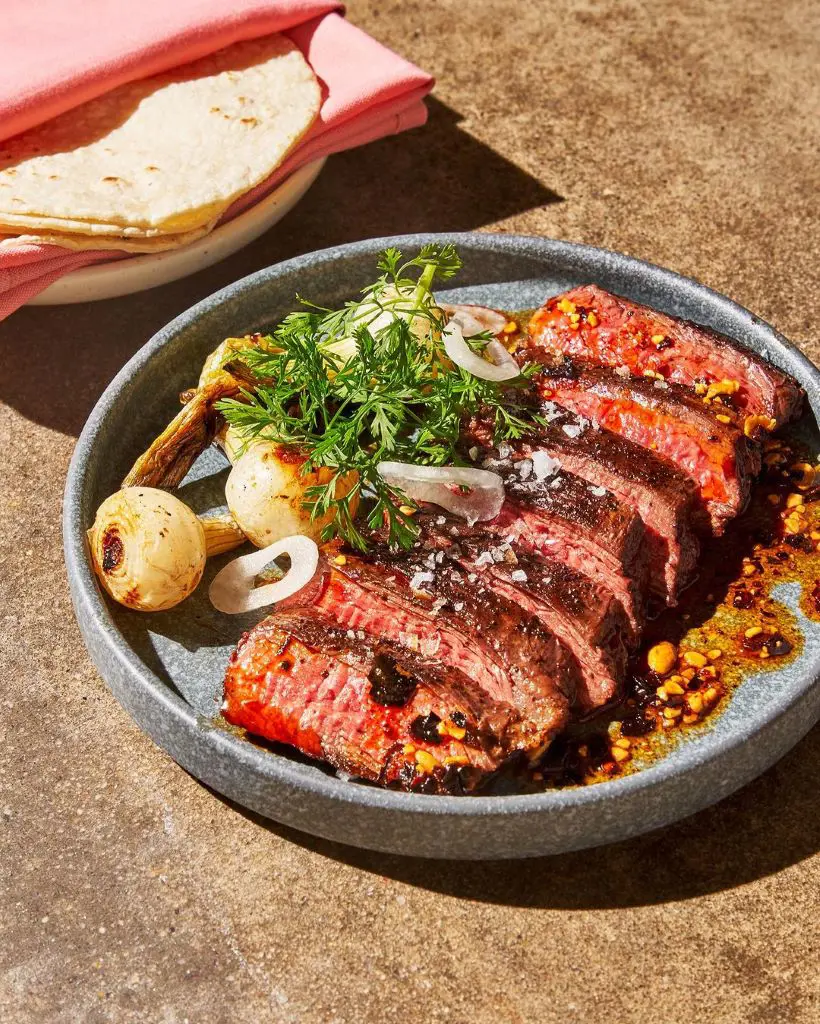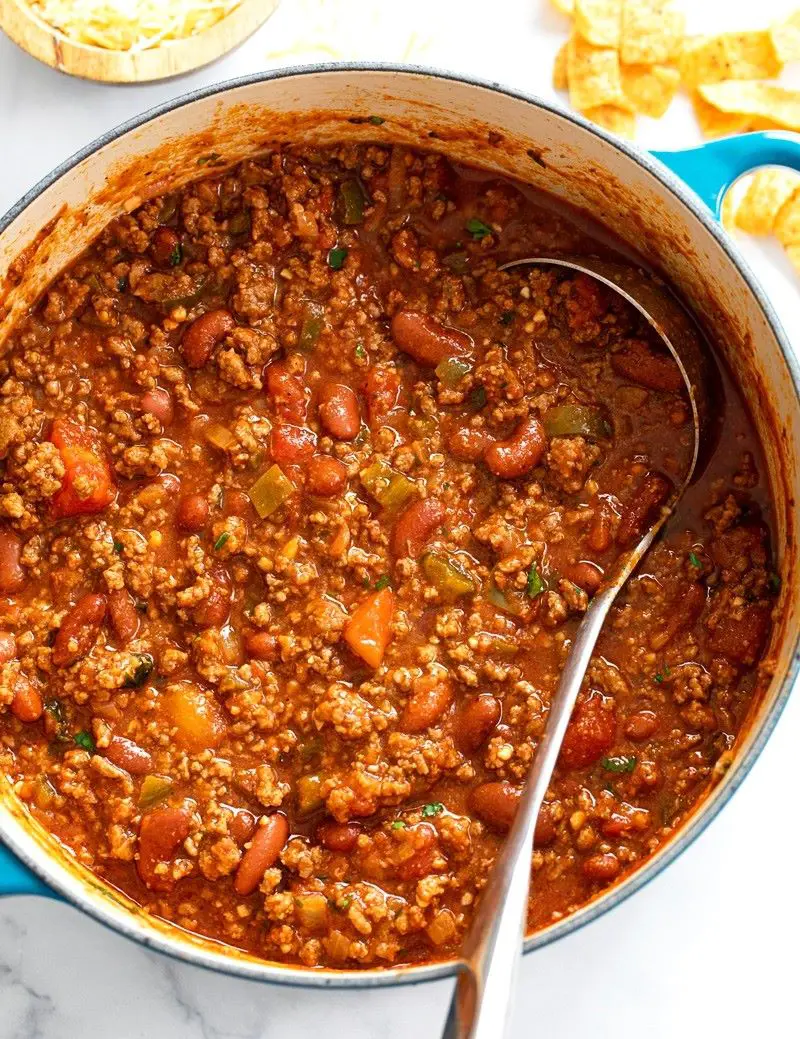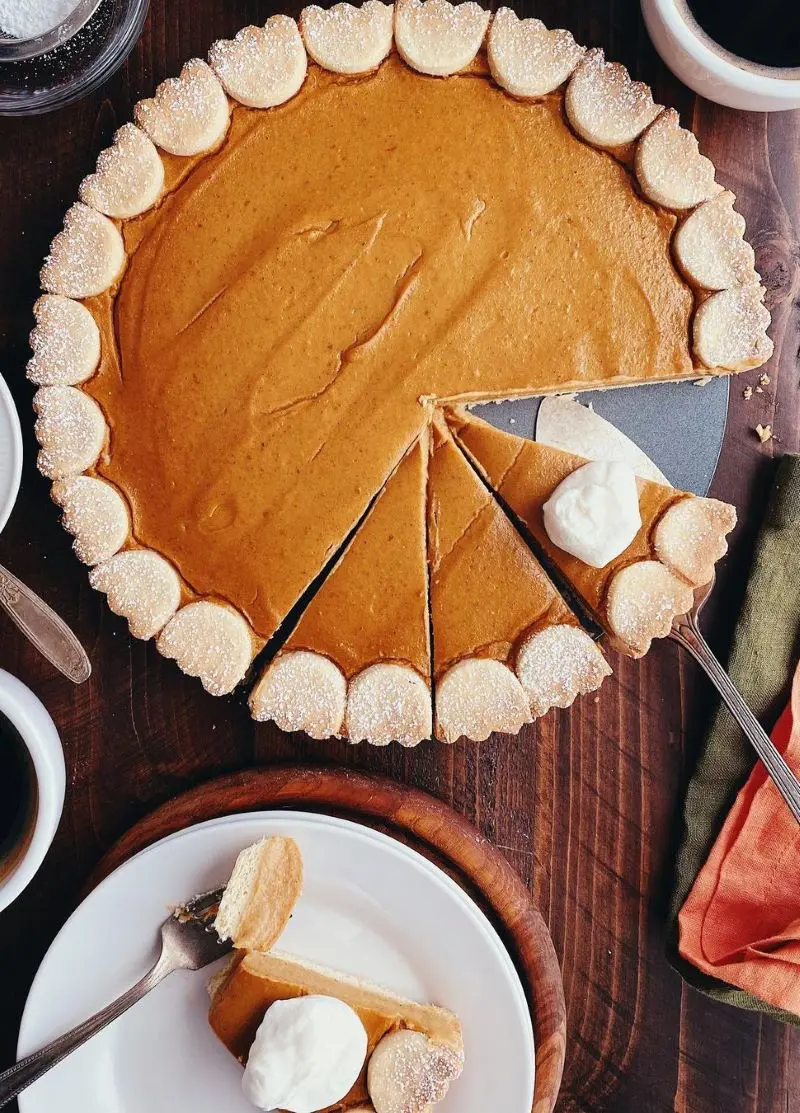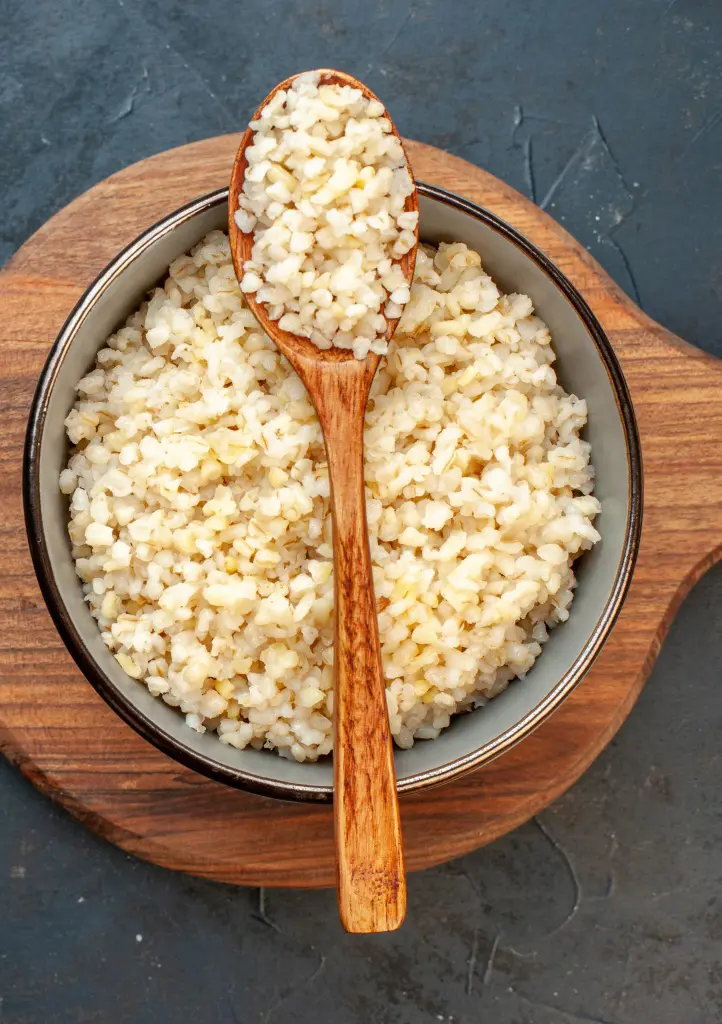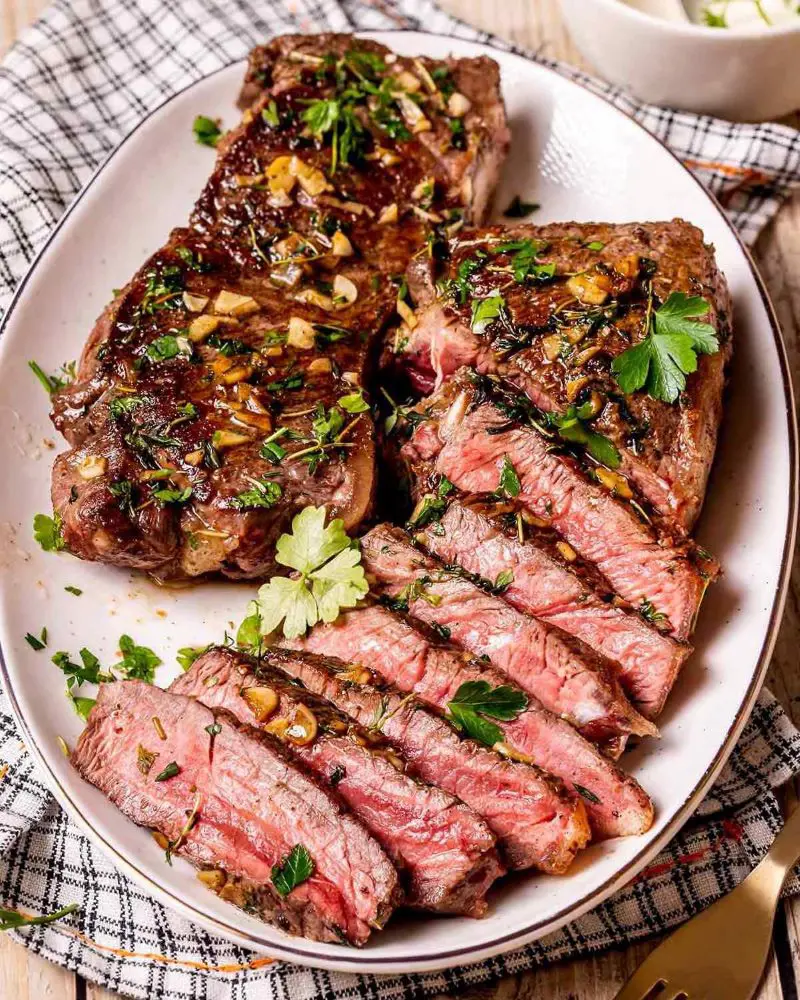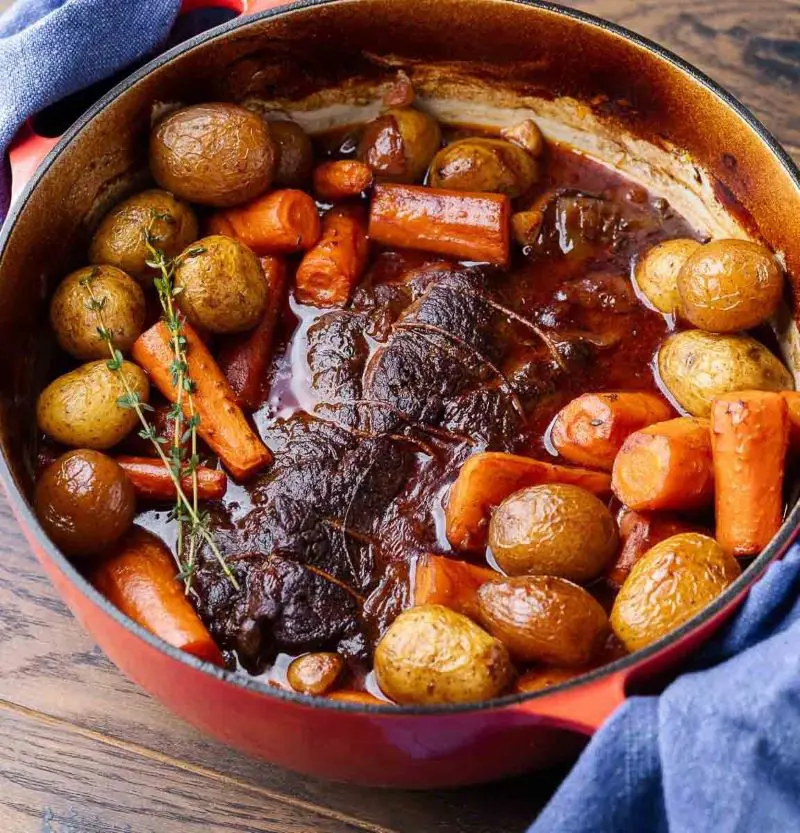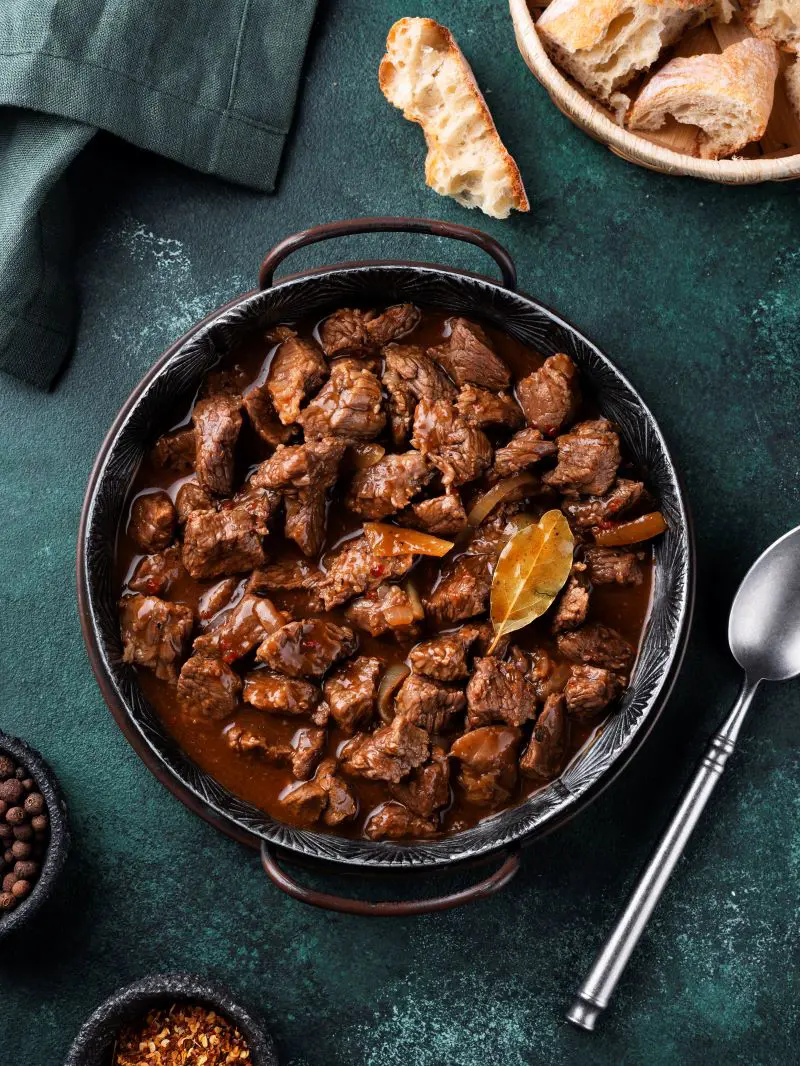This recipe is just for you if you are craving the steak like in a restaurant right at home. This skirt steak recipe transforms an everyday cut into something special.
Each bite is tender and wonderfully seasoned from the marinade. Perfect for casual weeknight dinners and special occasions, it's quick to prepare and even quicker to cook. Let us begin with how to cook skirt steak at home.
Ingredients For Skirt Steaks
Making a perfect skirt steak requires minimal yet carefully selected ingredients. The beauty of this dish lies in its modesty, needing only the meat and a blend of condiments.
- Skirt steak: It serves as the cornerstone of this dish. Divide it into two portions, and if possible, select outside skirt steak for its superior tenderness and richer flavor profile. The meat's natural marbling creates an exceptional taste experience.
- Olive oil: It forms the base of your marinade, ensuring even heat distribution during cooking while acting as a carrier for other flavors.
- Garlic: Fresh crushed garlic stands irreplaceable - it infuses the meat with aromatic depth that dried alternatives simply cannot match.
- Soy sauce: This sauce offers both moisture and deep umami notes, enhancing the meat's natural savory qualities.
- Lime: Fresh lime juice (or lemon as an alternative) performs dual roles: tenderizing the meat while adding bright, acidic notes.
- Honey: A touch of honey provides astute sweetness while naturally breaking down protein structures.
- Seasonings: Italian seasoning blend adds aromatic complexity through its mixture of basil, oregano, thyme, and rosemary. Black pepper and salt, applied to taste, round out the seasoning profile by enhancing the meat's natural flavors.
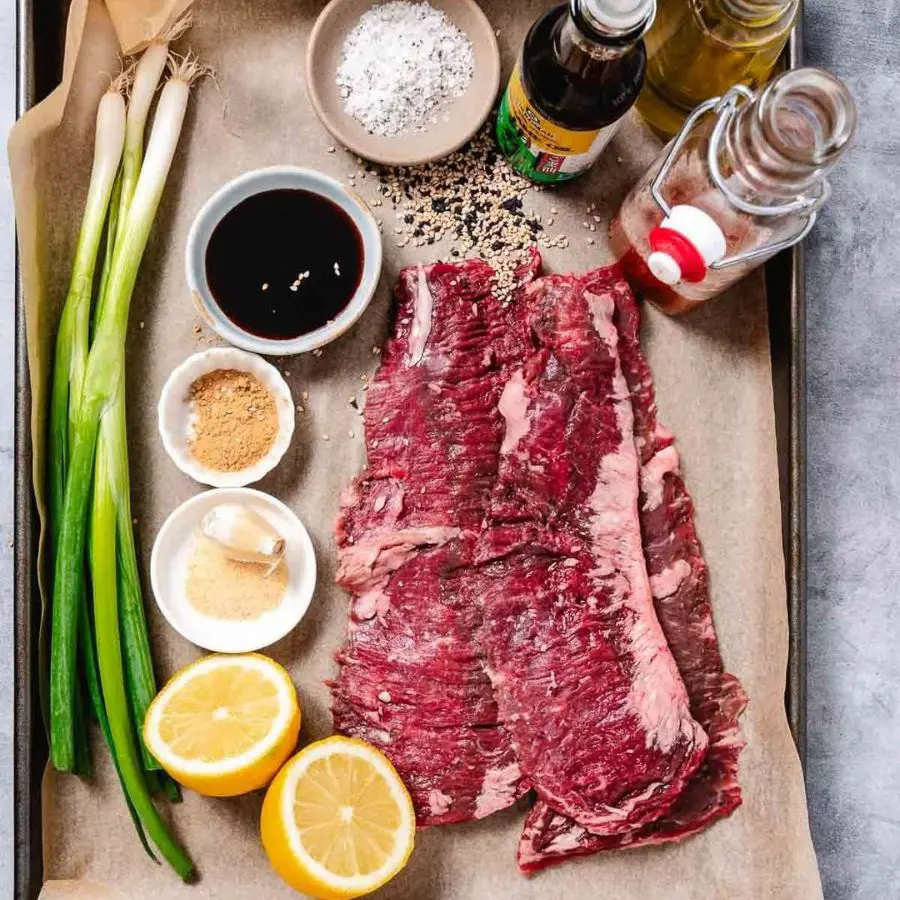
How To Cook Skirt Steaks
Let's make a perfect skirt steak. This thin cut of beef needs quick cooking and high heat - that's what makes it special. You can use your stove or grill. Here's everything you need.
What You'll Need:
- Skirt steak - 2 pounds, cut in half
- Black pepper - 1 teaspoon
- Salt - 1/2 teaspoon
- Italian seasoning - 2 teaspoons
- Garlic - 3 cloves, crushed
- Olive oil - 1/4 cup
- Soy sauce - 1/4 cup
- Lime juice - 2 tablespoons
- Honey - 2 tablespoons
Step-By-Step Instructions
Step -1: Make It Tender
Put your steak on a cutting board. Cover it with plastic wrap - this keeps things clean. Now grab your meat mallet. Hit the meat firmly but evenly. You're not trying to flatten it completely - just break up the tough muscle fibers. This helps make your steak easier to chew later.
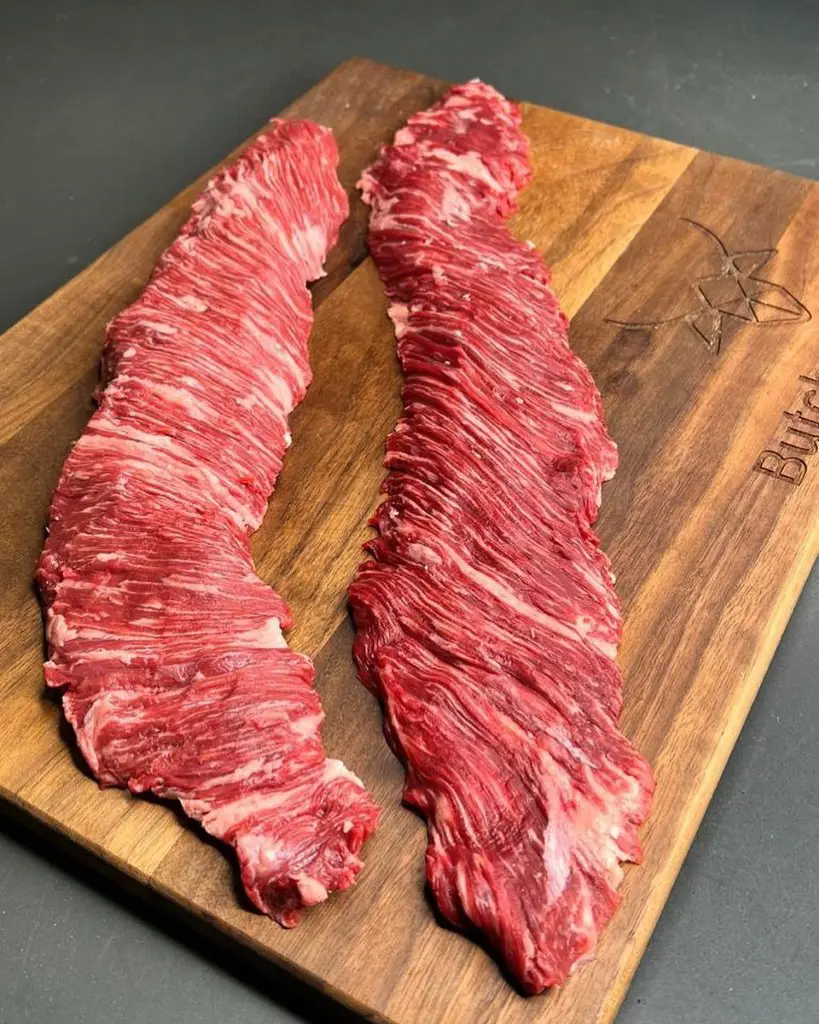
Step -2: Mix Your Marinade
Get a bowl. Pour in your olive oil and soy sauce. Add the honey - it helps give the meat a nice brown color when cooking. Squeeze in your lime juice. Add your crushed garlic, Italian seasoning, salt, and pepper. Mix everything well. Give it a taste - it should be flavorful but not too salty.
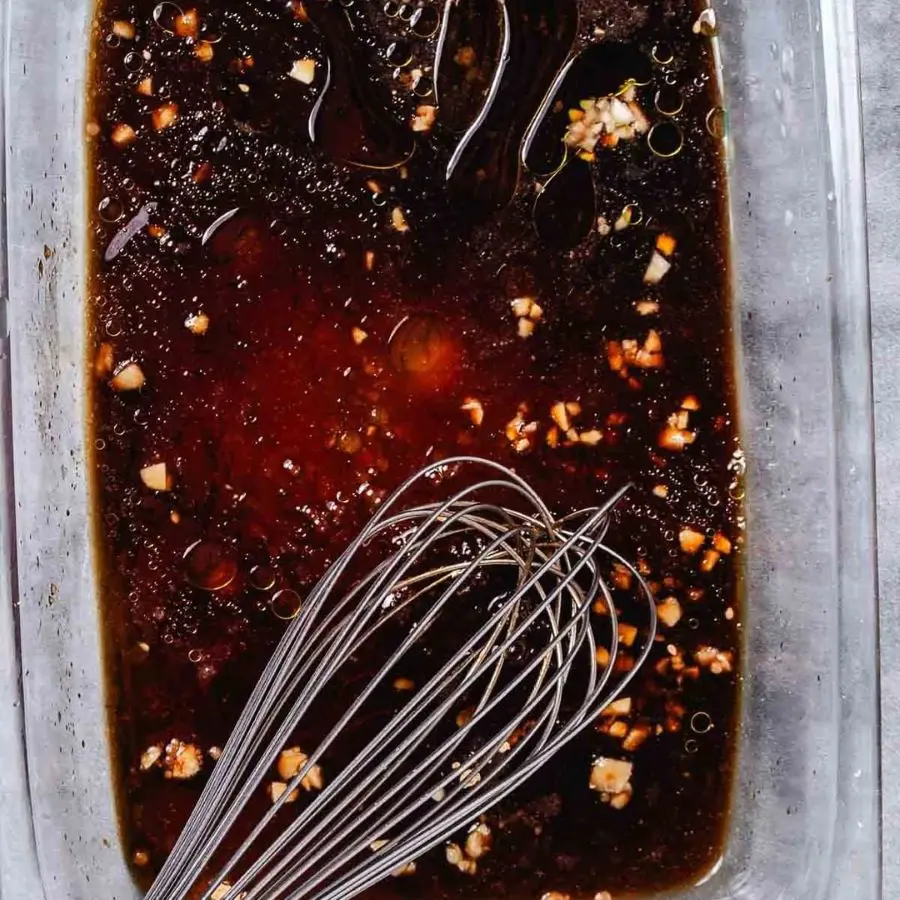
Step -3: Let It Soak
Put your meat in the marinade. In a rush? Give it 10 minutes in the freezer. Got time? It can stay in the fridge for up to four hours. Important: Before you cook, take it out thirty minutes beforehand.
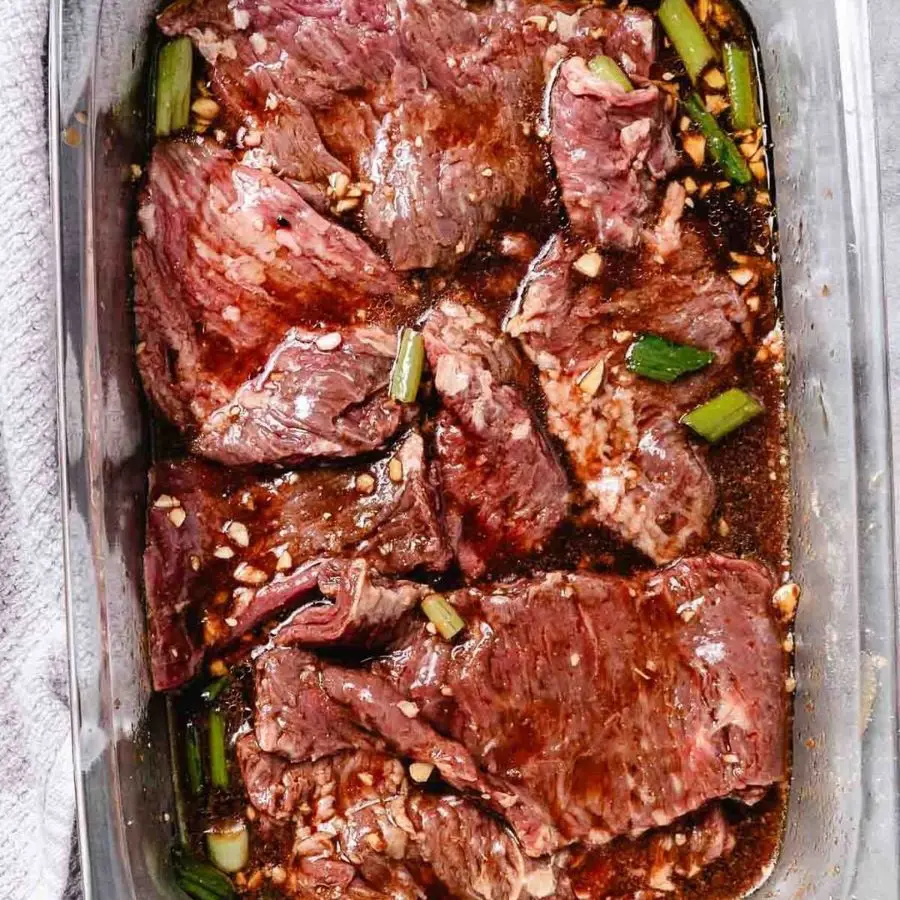
Step -4: Get Ready to Cook
Turn your stove on high. Put your iron skillet on. Wait until it's really hot - like, really hot. Drop a tiny bit of water on it. If the water dances and disappears instantly, you're ready.
Step -5: Cook It Quick
Put your steak in the hot pan. Listen for the sputter. Put your timer for 2-3 minutes. Don't move the meat! Let it form a nice brown crust. After 2-3 minutes, flip it once. Cook another 2-3 minutes. That's it.
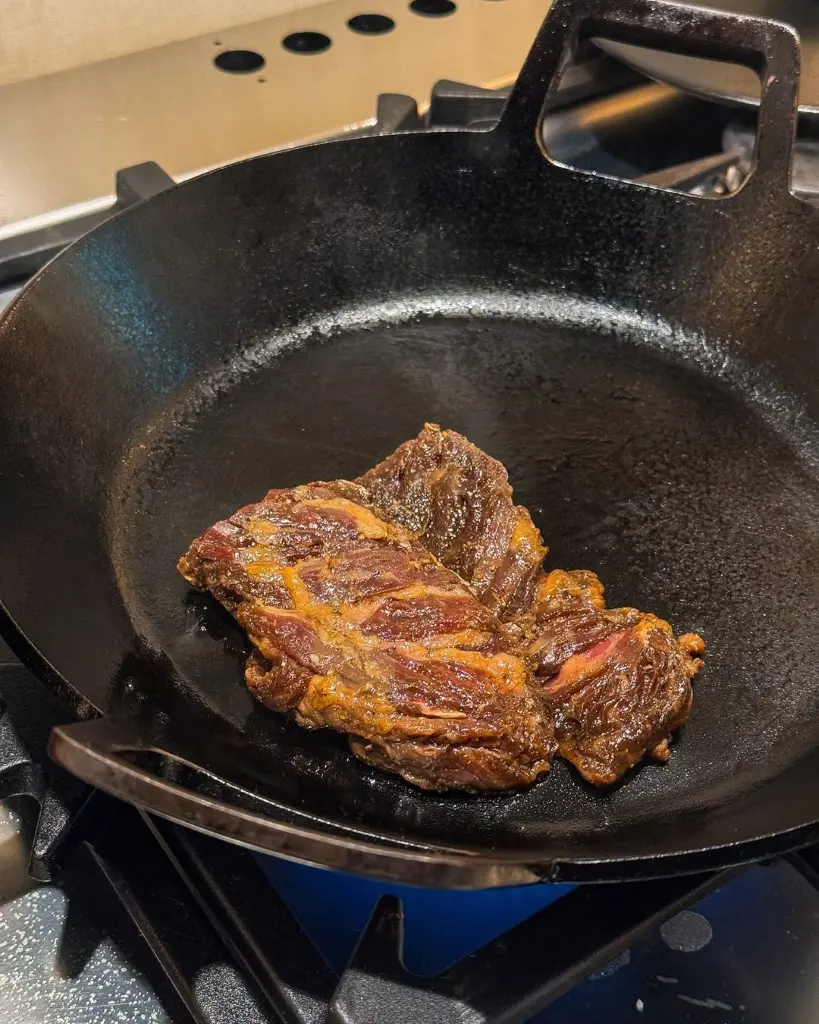
Step -6: Give It a Rest
Take the steak off the heat. Put it on your cutting board. Leave it alone for 10 minutes. Yes, really - 10 whole minutes. The juices are settling down on your steak, and it is still cooking inside. But cutting it too early will cause the delicious juices to spill out.
How To Cook Skirt Steak On Grill
Grilled skirt steak is delicious and cooks quickly when prepared properly with a tasty marinade. This skirt steak recipe delivers tender, juicy results every time by centering on high heat and careful timing.
Ingredients
- 2 pounds skirt steak, trimmed of extra fat
- Kosher salt
- Black pepper
For the Marinade:
- 2 shallots, finely chopped
- 4-6 large garlic cloves, minced or crushed
- 1/3 cup chopped Italian parsley (leaves and tender stems)
- 1 teaspoon ground cumin
- 1 teaspoon Aleppo pepper or red pepper flakes
- 1/2 teaspoon paprik
- 1 large lemon, zested and juiced
- 1/4 cup red wine vinegar
- 1/2 cup extra virgin olive oil
- Neutral oil, for grilling
Step-by-Step Instructions
Step -1: Prepare the Steak
Start with cold meat for easier trimming. Using a sharp knife, carefully remove any excess fat. Take your time – rushing this step might mean losing good meat along with the fat. Season the steak amply with salt and pepper on both sides.
Step -2: Mix the Marinade
Place shallots, garlic and cut parsley in a bowl. Then include cumin, Aleppo pepper (or red pepper flakes) and paprika. Lemon zest, lemon juice, red wine vinegar, olive oil are stirred into mixture until well mixed.
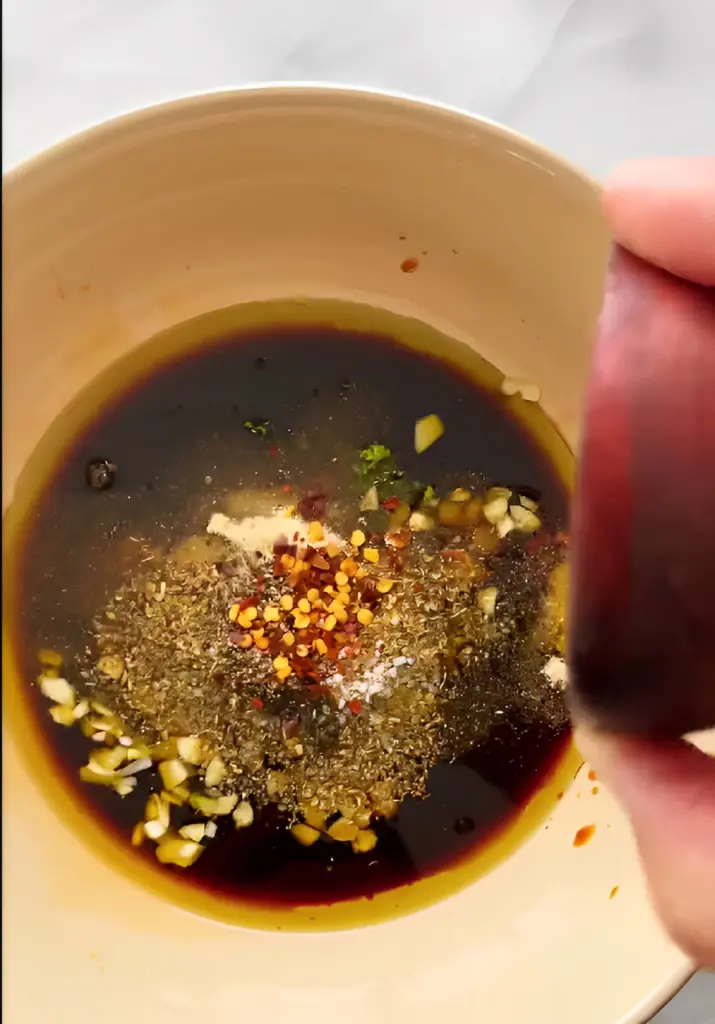
Step -3: Marinate
Place the seasoned steak in a zip-lock bag or glass container. Pour the marinade over the meat, making sure it's evenly sheathed. For supreme results, marinate in the refrigerator for 30 minutes up to 24 hours.
Before grilling, allow the meat rest at room temperature for 30 minutes. If you're short on time, a 30-minute counter marinade will still add relish.
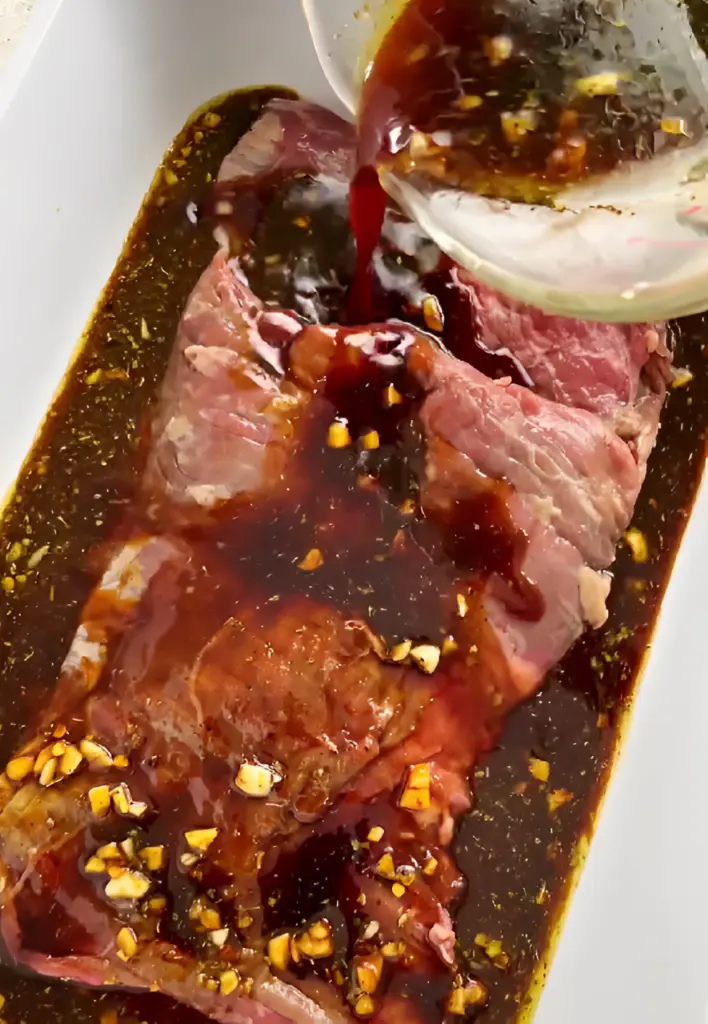
Step 4: Grill the Steak
Prepare your grill for high heat (400-450°F). Clean and oil the grates well. Take out the steak from the marinade, letting excess drip off. Place it directly over the hot zone.
For medium-rare, grill 3-4 minutes per side, or until internal temperature extents 125-130°F. Remember: skirt steak cooks quickly – stay close to your grill.
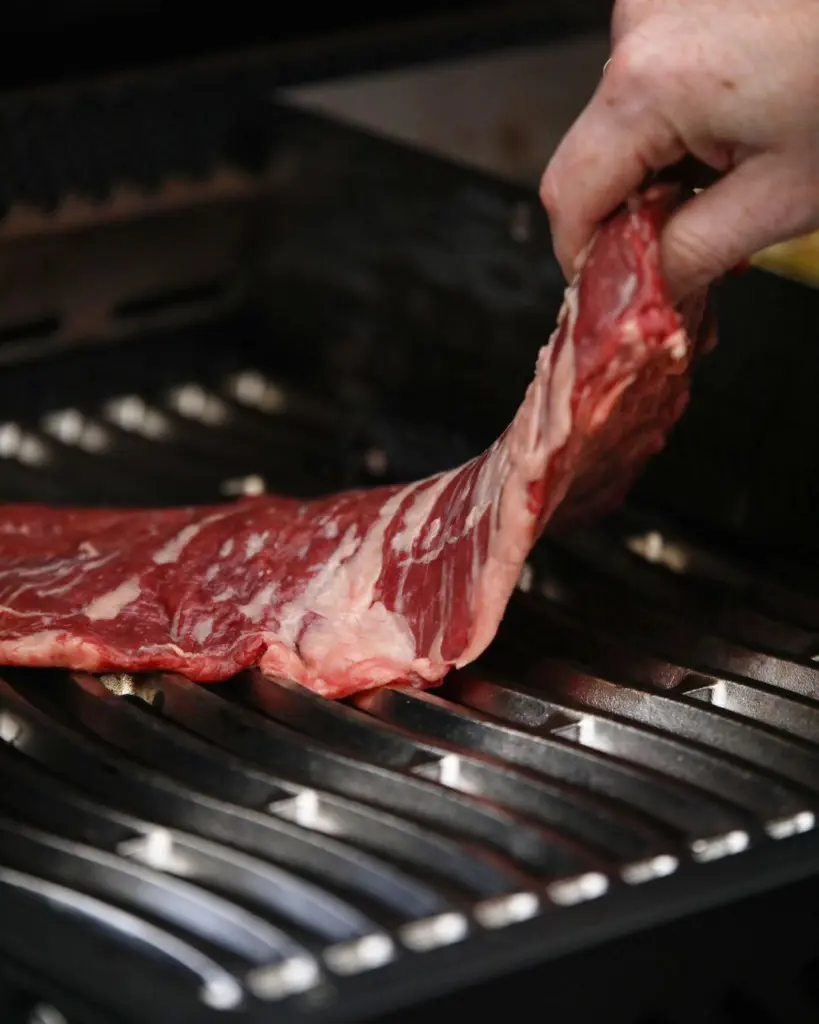
How To Cut Skirt Steak
Skirt steak features clear muscle fibers running crosswise. These natural lines in the meat determine your cutting direction. Proper cutting of steak transforms each bite from chewy to tender.
Cook to medium doneness (145°F) for ideal texture and juiciness. This temperature balances tenderness with flavor.
Step-by-Step Cutting Process:
- Initial Division: Start with your cooked skirt steak. The full strip is too long to handle easily. Cut it crosswise into 4-6 inch sections. This creates 3 or 4 manageable rectangles.
- Locate Muscle Lines: Examine each section carefully. The muscle fibers appear as distinct lines across the meat's surface. In skirt steak, these lines typically run from side to side.
- Align Your Cut: Position each piece so the muscle lines run left to right on your board. Your knife will cut perpendicular to these lines - this is cutting "against the grain."
- Final Slicing: Hold your knife at a slight angle or straight up. Slice each rectangle into thin strips, about 1/4 inch thick. The angle of your cut affects the width of each piece.
Cutting against the grain shortens muscle fibers. Shorter fibers create tender, easy-to-chew bites. Following the grain leaves long fibers intact, resulting in tough, chewy meat.
Essential Tips:
- Sharp knives create clean cuts
- Maintain consistent slice thickness
- Rest meat fully before cutting
- Steeper cutting angles create wider slices
How Long To Cook Skirt Steak
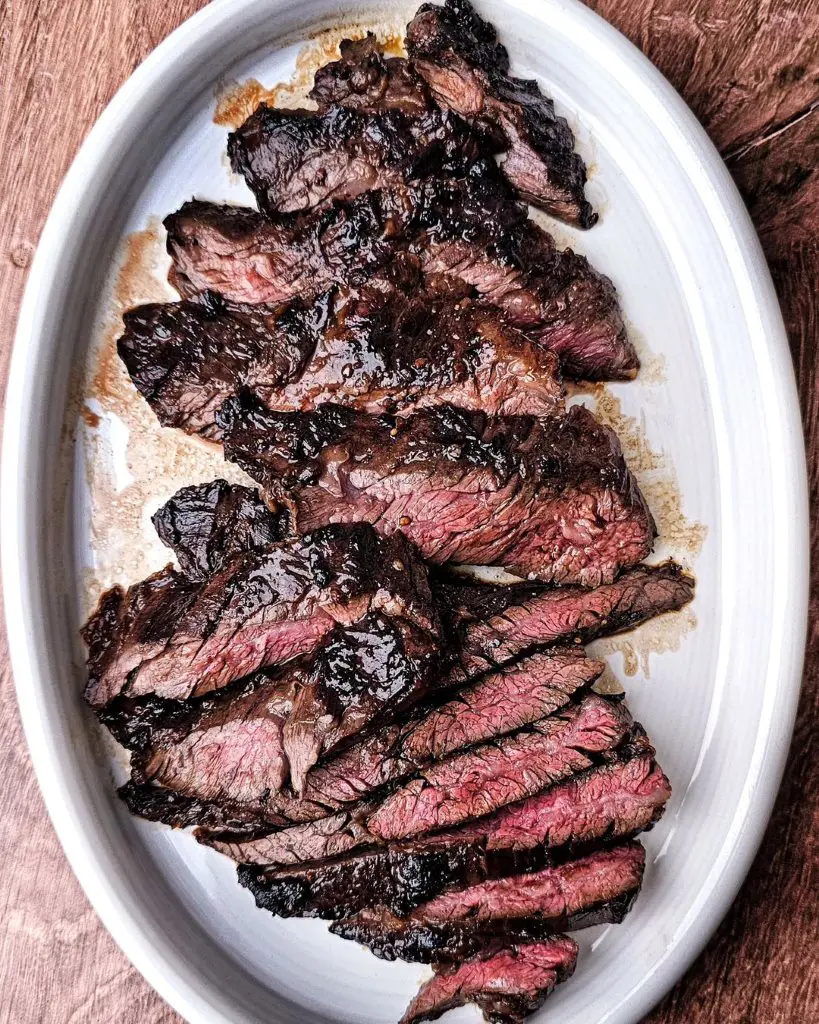
Skirt steak is all about timing and temperature. This thin, flavorful cut becomes tough if overcooked, so aiming for medium-rare gives you the best results. Before you start, make sure your pan is smoking hot – it's a must for getting that perfect sear while keeping the inside tender.
A basic rule: let your steak warm up on the counter before cooking. This helps it cook more evenly. When you're ready, here's what to watch for on the stovetop:
- Heat that pan up good and hot (give it 5-7 minutes)
- For a solid medium-rare (130-135°F):
- Cook first side: 3-4 minutes
- Flip and cook second side: 2-3 minutes
- Let it rest: 10 minutes
What to watch for on the grill:
- Warm up the grill to high heat
- For medium rare (125-135°F):
- Cook first side: 3 to 4 minutes
- Flip and cook second side:3-4 minutes
- Let it rest: 5 minutes
Exact Temperature Guide:
1. Rare (120-125°F)
- Cooking period: 2-3 minutes per side
- Texture: Very red center, cool inside
- Best for: True rare meat lovers
2. Medium-Rare (130-135°F)
- Cooking period: 3-4 minutes first side, 2-3 minutes second side
- Texture: Red, warm center
- Best for: Most people, ideal doneness
3. Medium (140-145°F)
- Cooking period: 4-5 minutes per side
- Texture: Pink center, hot throughout
- Note: Approaching maximum recommended doneness
4. Medium-Well (150-155°F)
- Cooking period: 5-6 minutes per side
- Texture: Slight pink center
- Warning: May become tough
5. Well Done (165°F)
- Cooking period: 6-7 minutes per side
- Texture: No pink
- Note: Not recommended for skirt steak
Here's what really matters: grab a meat thermometer. Lodge it in the thickest part of the steak – it's the only way to know for sure. Keep in mind the meat's temperature will climb another 5-10 degrees while it rests.
For the best results, pull your steak off the heat a bit before it hits your target temperature. Let it rest on a cutting board for those full 10 minutes. This isn't just about being patient – it's when the meat soaks those juices back up, giving you a tender, flavorful steak.
Tips For Cooking The Best Skirt Steak
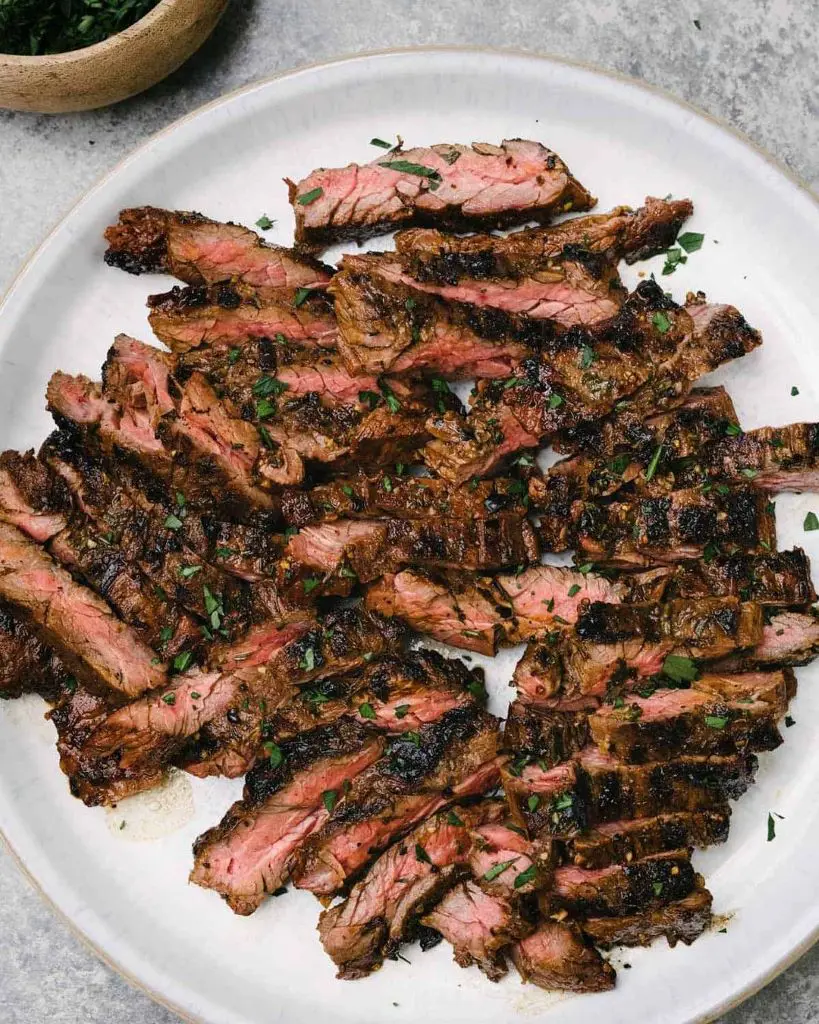
If you know a few key techniques and tricks of the trade, you’ll get skirt steak right. This cut is already great, but the good parts turn great with proper prep and a little attention.
Whether a beginner or an experienced cook, using these tips will insure a good result when you work with this versatile piece of beef.
- Marinate wisely - limit marinating time to 24 hours maximum to impede the meat from breaking down too much.
- Use a resealable plastic bag for marinating - this affirms the even distribution of flavors and makes cleanup a breeze.
- Pat the meat completely dry with paper towels before seasoning or marinating - this step is crucial for attaining that perfect golden-brown crust.
- Wait for your pan to get smoking hot before adding the steak - this helps evolve a flavorful sear while keeping the inside juicy.
- Let the steak reach room temperature before cooking - this ensures even cooking from edge to edge.
- Cut against the grain when serving - this breaks up the muscle fibers and results in more tender bites.
- Season generously with salt and pepper - skirt steak can handle bold seasoning.
- Don't overcrowd the pan - give each piece enough space to sear properly.
- Resist the urge to flip repeatedly - turn the steak only once during cooking.
- Allow for proper resting time (8-10 minutes) before slicing - this helps redistribute the juices.
- Consider using a cast-iron skillet - it maintains heat well and creates an excellent sear.
- Keep track of the grain direction before cutting into portions - mark it if needed, as it can become less visible after cooking.
- If grilling, create two temperature zones - one hot for searing and one medium for finishing.
- For tough sections, try tenderizing with a meat mallet before marinating.
How To Store Leftover Steaks
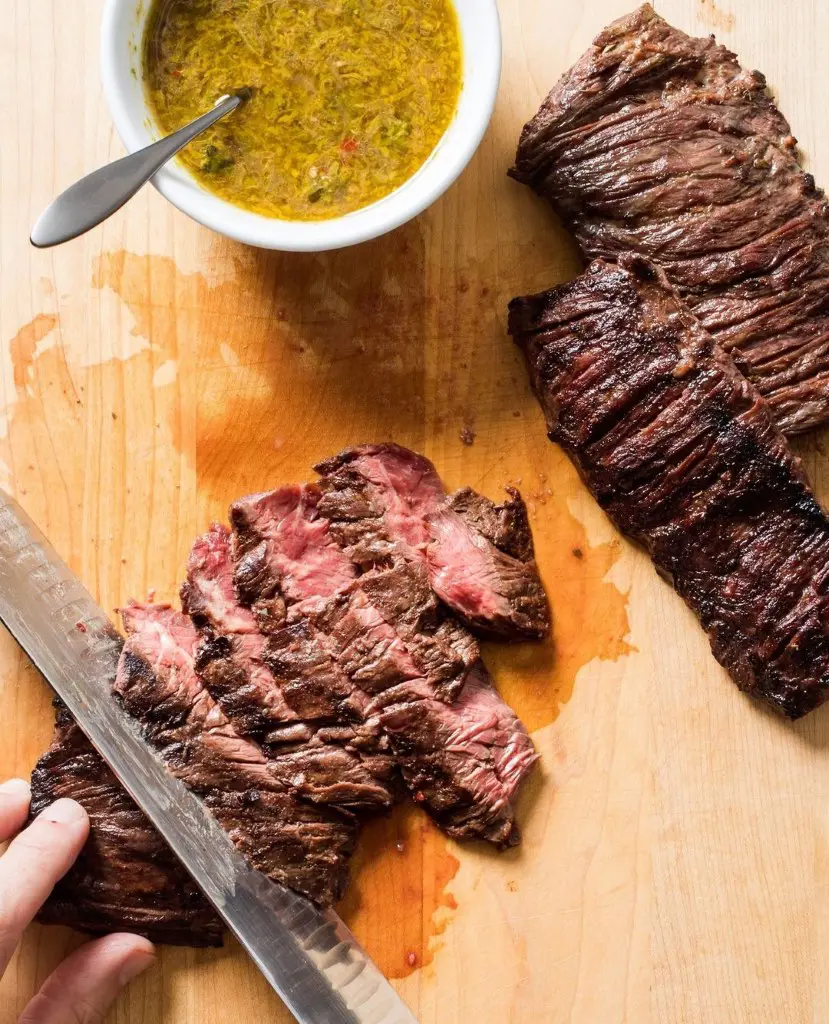
Whether you’ve spent money on a premium cut or have more than you can eat, the right storage is critical to keep your steak flavorful and textured.
Time matters with leftover steak. Get it in the fridge within 2 hours of cooking. Wrap it securely either in aluminum foil or in an airtight container.
Put it in the most cold part of your refrigerator, usually at the back, for a maximum period of 4 days. A quick label with the date helps track freshness, especially when you're storing several items.
How To Reheat Steaks?
Nobody wants tough, dried-out leftover steak. The key is gentle reheating. Here are two reliable methods that help preserve the meat's tenderness and flavor.
1. In the Oven
Heat your oven to 250°F. Set the steak on a wire rack over a baking sheet – this lets heat circulate evenly. Cook until the meat reaches 110°F inside. Want a pro tip? Put a small pan of water in the oven.
The steam helps keep your steak juicy. Give it 5 minutes to rest before cutting in.
2. On the Stovetop
Grab a pan with a lid. Set the heat to medium. Add your steak and a splash of water – just enough to create some steam. Cover and let it warm through. The steam works like magic to bring back moisture.
Keep the heat moderate; high temperatures will just toughen the meat. A few minutes per side usually does the trick.
Freezing for Later Use
Sometimes you need the long-term option. Let your steak cool completely first. Wrap it snugly in foil – make sure there are no gaps. Pop that wrapped steak into a freezer bag and squeeze out all the air.
Mark it with today's date. Frozen this way, your steak stays good for two months. Think ahead: slicing before freezing makes it easier to thaw and reheat just what you need. When it's time to eat, let it thaw slowly in the fridge overnight.
What To Serve With Skirt Steak
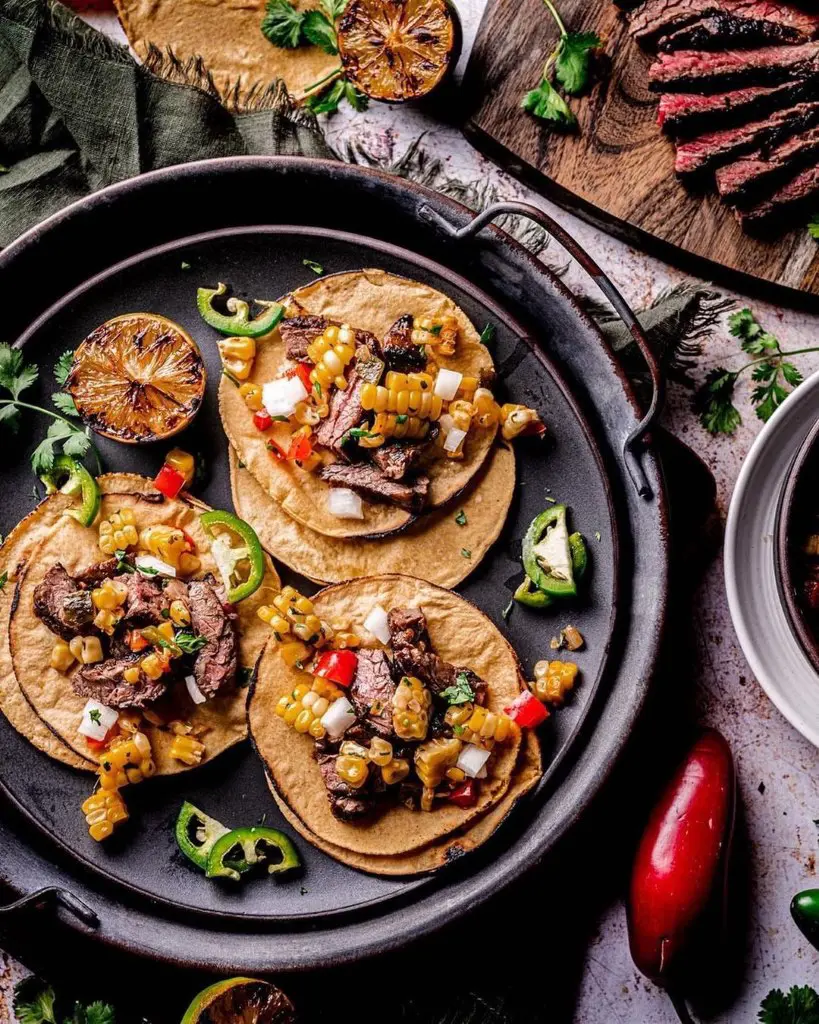
Skirt steak’s bold, beefy relish turns it into a variable main while creating a versatile accompaniment. Here’s how to build the perfect plate around your steak from crispy potatoes to fresh salads.
1. Vegetable Sides
Transform simple vegetables into memorable sides. Try roasted parmesan broccoli for a crispy, cheesy finish, or honey garlic roasted carrots for a sweet-savory balance.
Brown butter asparagus adds a nutty richness, while roasted cauliflower or creamy Brussels sprouts provide hearty alternatives. For something seasonal, roasted butternut squash brings warm, autumn flavors to your plate.
2. Potato
Nothing soaks up steak juices better than potatoes. Classic mashed potatoes offer creamy comfort, while crispy smashed potatoes provide textural contrast.
For something special, try twice-baked potatoes stuffed with cheese and herbs. Au gratin layers thin potato slices with cream and cheese, creating an elegant side. Roasted pesto potatoes add an herbal twist to the traditional starch.
3. Grains and Pasta
Looking beyond potatoes? Rice pilaf brings nutty, aromatic flavors to your plate. Creamy parmesan risotto or mushroom orzo pasta offer sophisticated alternatives. For heartier options, try cranberry apple wild rice or rich, creamy macaroni and cheese.
4. Fresh and Crisp Salads
Balance your meal with fresh greens. A simple garden salad keeps things light, while a classic Caesar adds bold flavors.
For something different, how about an apple salad with crisp fruit and nuts, or a wedge salad, blue cheese and bacon. Fresh crunch from a green bean salad and seasonal roastings in a butternut squash salad.
5. Fruit Salads
Add unexpected freshness with fruit salads. Try a winter fruit salad featuring seasonal citrus, or a perfect fruit salad packed with ripe berries.
For something unique, consider creamy grape salad or pina colada fruit salad for tropical flair. A berry salad dressed in honey mascarpone brings an elegant touch to your steak dinner.


